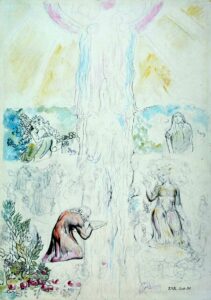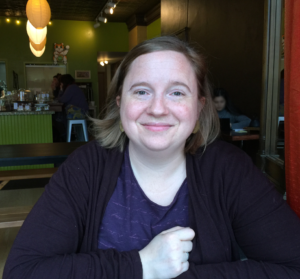
Several weeks ago, I received an interesting chain letter. Instead of being asked to send money to the designated recipient, I was to send a poem and forward the chain letter on to 20 people. If everyone followed through, I would receive 400 poems in the mail in short order.
I usually trash these invites, but something about this one caught my fancy, and I complied. In return, I received a variety of texts, including a Bob Dylan song, a verse from children’s book author Shel Silverstein, a poem by someone’s mother-in-law as well as poems by the illustriously immortal. The range and scope of the responses heightened my awareness of how we often turn to others—poets, rock stars—to speak to our souls, forgetting that all of us have the capacity to bear witness to our experience and unearth words that reflect back our deepest understanding of ourselves.
 In his latest book, Drinking from the River of Light: The Life of Expression poet, spiritual teacher, and cancer survivor Mark Nepo credits self-expression as the rope he climbed to emerge from his struggle with cancer and return fully to life:
In his latest book, Drinking from the River of Light: The Life of Expression poet, spiritual teacher, and cancer survivor Mark Nepo credits self-expression as the rope he climbed to emerge from his struggle with cancer and return fully to life:
“I’ve come to believe that the heart of awakening is the quietly courageous act of feeling and facing what is ours to face. And I’ve discovered along the way that writing—expressing—is one of the best ways to stay awake. It doesn’t matter how ‘good’ our expressions are but that they keep us in relationship to the larger Universe we are a part of.”
You may be thinking what this has to do with you if you are not a writer or poet. Please consider this excerpt from James Baldwin’s magnificent story “Sonny’s Blues.” The character speaking is Sonny, a heroin addict and jazz pianist.
“It’s terrible sometimes, inside…that’s what’s the trouble. You walk these streets, black and funky and cold, and there’s not really a living ass to talk to, and there’s nothing shaking, and there’s no way of getting it out—that storm inside. You can’t talk it and you can’t make love with it, and when you finally try to get with it and play it, you realize nobody’s listening. So you’ve got to listen. You got to find a way to listen.”
That storm inside. Can’t talk about it. And sex won’t help. And nobody wants to listen. Sound familiar? By the end of the story, Sonny concludes that the remedy to his despair is that he has to listen to himself.
 The poet Gregory Orr speaks passionately about his discovery of poetry and how it helped him survive his unbearable despair after he accidentally killed his brother. In a 2006 interview for NPR, Orr compellingly talks about how language helped him heal. “I believe in poetry as a way of surviving the emotional chaos, spiritual confusions and traumatic events that come with being alive. When I was 12 years old, I was responsible for the death of my younger brother in a hunting accident. I held the rifle that killed him. In a single moment, my world changed forever. I felt grief, terror, shame, and despair more deeply than I could ever have imagined. In the aftermath, no one in my shattered family could speak to me about my brother’s death, and their silence left me alone with all my agonizing emotions. And under those emotions, something even more terrible: a knowledge that all the easy meanings I had lived by until then had been suddenly and utterly abolished.”
The poet Gregory Orr speaks passionately about his discovery of poetry and how it helped him survive his unbearable despair after he accidentally killed his brother. In a 2006 interview for NPR, Orr compellingly talks about how language helped him heal. “I believe in poetry as a way of surviving the emotional chaos, spiritual confusions and traumatic events that come with being alive. When I was 12 years old, I was responsible for the death of my younger brother in a hunting accident. I held the rifle that killed him. In a single moment, my world changed forever. I felt grief, terror, shame, and despair more deeply than I could ever have imagined. In the aftermath, no one in my shattered family could speak to me about my brother’s death, and their silence left me alone with all my agonizing emotions. And under those emotions, something even more terrible: a knowledge that all the easy meanings I had lived by until then had been suddenly and utterly abolished.”
Orr’s portrayal of his situation aligns with psychoanalyst and Buddhist teacher Mark Epstein’s description in The Trauma of Everyday Life of what happens during trauma: “the reassuring absolutisms (albeit mythical ones) of daily life—that children do not die, that worlds do not move, and that parents always survive—are replaced by other, more pernicious convictions: the ‘enduring, crushing meanings’ (of one’s aloneness, one’s badness, one’s taintedness, or the world’s meaninglessness).” Trauma, he writes, “forces one into an experience of the impersonal, random, and contingent nature of reality, but it forces one violently and against one’s will.” It also exposes us to our powerlessness, our helplessness. “The old absolutisms no longer reassure, and the newly revealed reality feels crushing.”
How do we cope when life as we know it breaks down and what we have counted on seem broken? How can we discover our strength and courage in facing challenging obstacles?
Here is the last stanza of the poem Gregory Orr wrote years after his brother’s accident in which he resolves his once unutterable grief and shame.
By Gregory Orr
for Peter Orr
I was twelve when I killed him;
I felt my own bones wrench from my body.
Now I am twenty-seven and walk
beside this river, looking for them.
They have become a bridge
that arches toward the other shore.
Language summons a whole world into being, says Orr. His poem contains a trauma, but also stands outside and apart from the trauma. The bridge he mentions is the bridge language makes between our inner and outer worlds. As humans, we are continually seeking self-understanding, ways to know ourselves and make sense of who we are. Unlike other species that have language, humans are the only species that have metacognition, the ability to reflect on our own minds. This self-reflective capacity—Why did I do X? How did that make me feel?— is essential to making meaning of our lives.
 Language’s magical power is to make sense of the senseless. At the age of nineteen months, Helen Keller became blind and deaf. In her autobiography, she describes the dramatic moment when her beloved teacher Annie Sullivan helps her, at six years old, connect a physical sensation with its word.
Language’s magical power is to make sense of the senseless. At the age of nineteen months, Helen Keller became blind and deaf. In her autobiography, she describes the dramatic moment when her beloved teacher Annie Sullivan helps her, at six years old, connect a physical sensation with its word.
“As the cool stream gushed over one hand she spelled into the other the word water, first slowly, then rapidly. I stood still, my whole attention fixed upon the motions of her fingers. Suddenly I felt a misty consciousness as of something forgotten–-a thrill of returning thought; and somehow the mystery of language was revealed to me. I knew then that ‘w-a-t-e-r’ meant the wonderful cool something that was flowing over my hand. That living word awakened my soul, gave it light, hope, joy, set it free! There were barriers still, it is true, but barriers that could in time be swept away.”
The writer Isak Dinesen famously said, “All sorrows can be borne if you can put them into a story or tell a story about them.” But writing from the heart isn’t just about the transformation of difficult emotions; to write from the heart is to engage with life at its fullest, in all its terror and splendor. In writing from the heart, we break our self-silencing and flex our muscles of courage to uncover our deepest truths.
Writing stories, poems, or journal entries may actually be the second necessary action required in finding our voices and uncovering our inner resources, the essence of who we are. The first action is deep listening. Hear Mark Nepo on listening:
“In many ways, writing is listening and simply taking notes. . . . Being still and listening allows us to behold what is before us. The deepest form of bearing witness is to behold another in all their innocence. This is the key to love. To listen until the noise of the world subsides. To listen until the noise of the mind subsides. To listen until the noise of our wounds subsides. To listen until we only hear the life before us.”
Miriam Greenspan in her powerfully helpful book, Healing Through the Dark Emotions: The Wisdom of Grief, Fear, and Despair, offers three skills and seven steps in alchemizing difficult emotions. Our culture, she claims, is emotion-phobic, and encourages an invincible heroic ideal while often shaming those who do not live up to societal expectations.
Greenspan offers ways to regain balance and exuberance in the face of even the darkest emotions. The author uses the acronym ABS for the three skills she believes basic to healing: A for Attending, B for Befriending, and S for Surrendering. “When we can mindfully attend to, tolerate, and surrender to the energy of the dark emotions as it flows,” Greenspan writes, “we open the heart’s doorway to the magic of emotional alchemy.” But, after describing these skills and steps in detail, she adds a caution. “The three basic skills and seven steps of the alchemy of the dark emotions are condensed distillations of a process that is ultimately mysterious. This process cannot easily be reduced to a set of skills, ideas, or biochemical events. The systemization of any emotional process gives it an aura of scientific credibility. But emotional alchemy is an art, not a science.”
What the authors mentioned have in common is a deep faith in our capacity to handle and thrive beyond even the most troubling aspects of our lives and a conviction we are inherently courageous and loving beings capable of transformation.
When we practice deep listening—and try to find the words for what we hear—we may be surprised at what we find. What we haven’t noticed about ourselves, what lies hidden within, may come as wonderment at the ignored riches and creative forces offering their help.
This post appeared in a slightly different form on Dale’s blog on Psychology Today. You can find all of Dale’s blog posts for Psychology Today at “Transcending the Past.”




